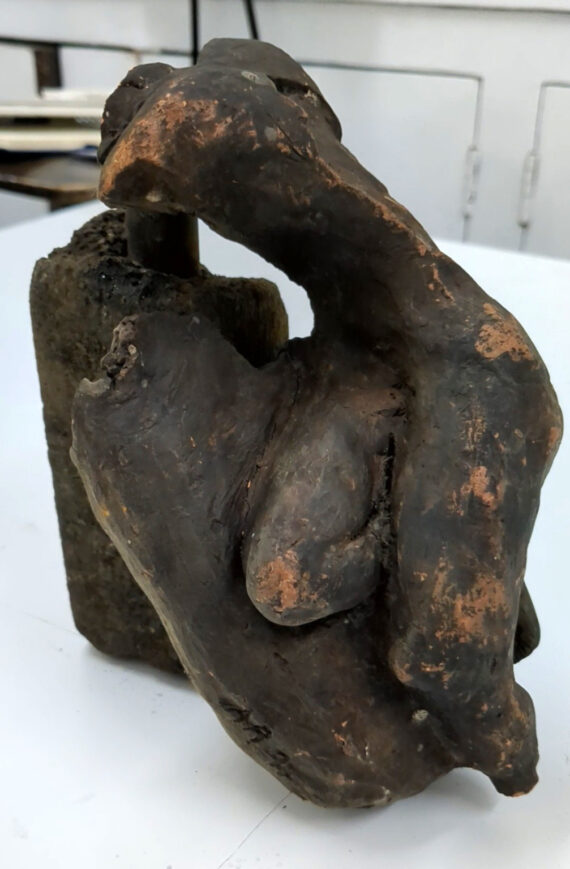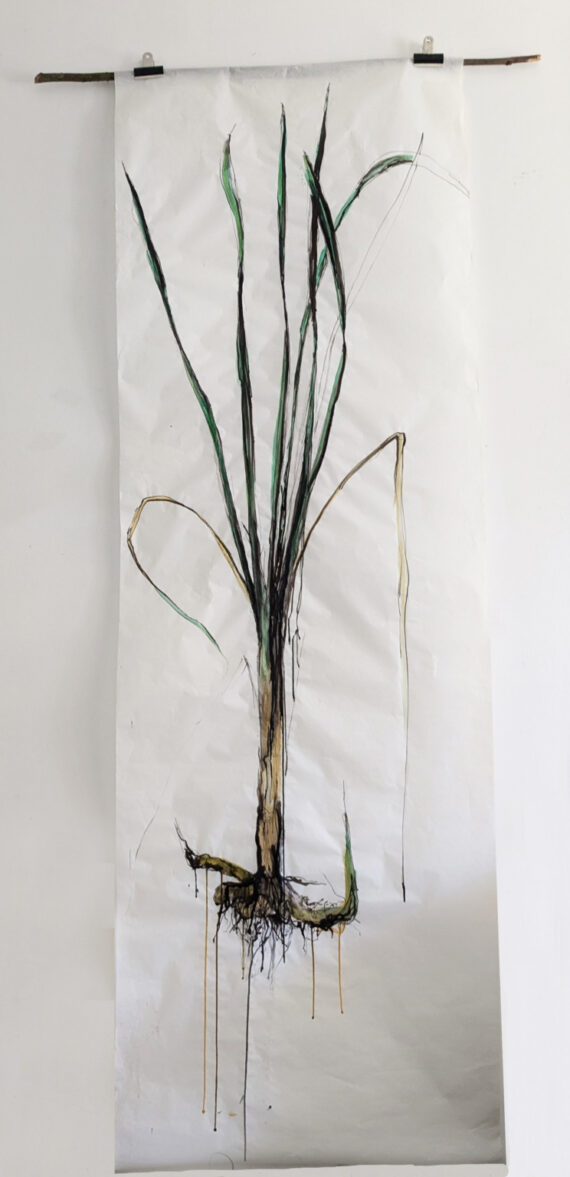Last year, the lead architect/designer of Northcote Nature Reserve contacted me to discuss the idea of an art residency, investigating and responding to plants from the nature reserve and its adjacent tidal section of the River Crane (the lower reaches that go into the Thames at Isleworth). This would be a collaboration that could bring another perspective to the growing frame of reference for the nature reserve project and for me an opportunity to locate my practice in an ongoing ecology initiative. Planned projects and exhibitions have meant, however, that I have not been able to get started until today.
My work
I create large-scale charcoal drawings of plants that live in the wild, seeking to celebrate the majestic and highlight smaller plants.
Choosing wild flowers and weeds, I seek to reveal their strength, grace and resilience and highlight their importance in our ecology.
The appeal of this project was that it would give my work a new focus. Working at a specific site, where other groups are actively working to preserve and improve the natural ecosystem and its biodiversity, my drawings would bring another perspective and hopefully draw in new audiences. Next to Northcote Nature Reserve is a large hut that is planned to be a visitor hub and centre for a physic garden. When it opens, my drawings will also be part of the story and exhibited there. The renovation of the building is a separate project to the nature reserve, still in the planning.
Some background
Northcote Nature Reserve is situated off Northcote Avenue, Isleworth, along the River Crane, a tributary of the River Thames. It was formerly a recreation ground, sometimes known as Pit Park, that once served the newly built Worple Estate just after the First World War. Over recent years the open space had fallen into neglect.
Friends of Northcote Nature Reserve (FoNNR) is a local initiative, led by Hounslow residents to transform the space into a nature reserve and wildlife sanctuary. The design was overseen by Astronaut Kawada Architecture and Habitat and construction work by the London Borough of Hounslow has been underway over the last year. The reserve is due to open to the public by Summer 2023 (yes, round about now!).
The River Crane is one of the most natural rivers in London, supporting a range of high quality habitats. It runs 13.6km from Heathrow, through three London boroughs, Hillingdon, Hounslow and Richmond Upon Thames into the River Thames at Isleworth. The tidal section of river extends approximately one kilometre from the River Thames; Northcote Nature Reserve marks the end of the tidal section, and has a natural tidal inlet.
Writing my process
On my first visit to the river and reserve I accumulated a myriad of photographs and notes and decided a blog would enable me to reflect on my journey and better organise my thoughts and processes. It would trace the development, approach and evolution of my work over the duration, and show the river and nature reserve from the perspective of an ongoing art project. By documenting my progress, I aim for this narrative to become part of the work, presenting a new perspective on this ongoing ecological initiative and inviting new audiences and dialogue.
To go to the start of my journey:
Select July 2023 from Archives above. Scroll to the end of July 2023 and work up!
To find more of my work:
Visit my website and/or follow me on instagram:
w: www.nickirolls.com i: @nickirolls























